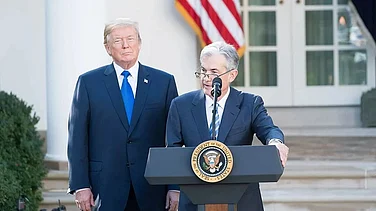Prime Minister Narendra Modi is scheduled to sign the free trade agreement (FTAs) with the United Kingdom (UK) on Thursday during his two-day visit to the country. This will mark Modi's fourth visit to the UK since he took office in 2014. Notably, Commerce and Industry Minister Piyush Goyal is also expected to accompany him for the formal signing.
In May this year, Modi and UK Prime Minister Keir Starmer announced the successful conclusion of the India–UK FTA. This came after three years of talks between the countries. It will take place against the backdrop of growing economic relations between India and the UK, as exemplified by the bilateral trade of approximately $60bn, which is projected to double by 2030.
The signing of the India-UK FTA is significant: it promises to cut or eliminate tariffs on a vast range of goods, boost two-way trade and investment, and deepen economic cooperation between the world’s fifth- and sixth-largest economies. Officials on both sides hail the agreement as a “historic” step that could deliver cheaper products for consumers, improve new market access for companies and foster stronger strategic alignment between New Delhi and London.
Long Road Ahead
The negotiations between both countries began in January 2022. However discussions dragged on as complex issues proved tougher to resolve than anticipated. The negotiations spanned three years and saw multiple UK prime ministers, from Boris Johnson and Liz Truss to Rishi Sunak and now Starmer, as well as an Indian general election in between. Key turning points included two missed “Diwali deadline” attempts under Johnson and Truss, and a pause in late 2023 when the UK’s general election was called.
However, the momentum seemed to have picked up after Starmer took office. He and Modi met on the sidelines of the G20 summit in November 2024 and agreed to relaunch the talks. Negotiations resumed earlier this year and by May 6 the two sides announced they had finally concluded an FTA in principle.
What's In the Deal?
India has agreed to open its market to a variety of British goods, with tariffs reduced or eliminated on about 90% of UK product lines. In a major overhaul, Indian tariffs on Scotch whisky and British gin–currently 150%–will be halved to 75% and then gradually cut to 40% over ten years. Duties on imported British automobiles—which can exceed 100% today—will drop to 10%, though under a quota system that caps the number of cars that can enter at the lower rate.
India also decided to impose tariff cuts on a range of UK products, including cosmetics, salmon, chocolates, biscuits and medical devices. On top of that, New Delhi will for the first time allow British companies to bid for certain Indian government procurement contracts, opening up about 40,000 public tenders (worth an estimated £38bn a year) above a ₹2bn threshold.
On the other hand, the UK opened its market for 99% of Indian goods, duty-free. It will nearly cover 100% trade value of Indian exports. In other words, Britain will eliminate tariffs—currently ranging from 4%–16%—on various Indian products such as textiles and apparel, footwear, gems and jewellery, furniture, machinery and chemicals.
The UK also made key concessions on the services and mobility front. Under the pact, London will provide easier short-term visas and work permits for Indian professionals. Britain will offer up to 1,800 visas per year for Indian chefs, yoga instructors and musicians to work in the UK.
According to British officials, by 2040, the deal would increase bilateral trade between the UK and India by £25.5bn, the UK’s GDP by £4.8bn and wages by £2.2bn each year. British negotiators said it was the most ambitious deal ever agreed by India, The Guardian reported.
A particularly notable win for India is the UK’s agreement to exempt Indian workers on temporary assignments from paying social security contributions for up to three years. The so-called "Double Contributions Convention" is expected to save Indian businesses and professionals around ₹40 billion each year.
Opportunities and Concerns
The trade deal is expected to benefit a number of sectors. "In India, sectors like textile exports, leather, agriculture, and IT services may experience significant growth. The elimination of tariffs on textiles and apparel could boost exports and create jobs, while the IT sector may benefit from ambitious commitments that enhance its global standing. Other high-potential sectors include sports goods, toys, gems, jewellery, engineering goods, auto parts, engines and organic chemicals," said Agneshwar Sen, associate partner and leader of Trade Policy at EY India in an earlier report.
But on the downside, experts pointed out that opening India’s government procurement through India-UK FTA could risk Micro, Small & Medium Enterprises (MSMEs) and 'Make in India' as they heavily rely on protected access to government contracts. New Delhi-based think tank Global Trade Research Initiative (GTRI) pointed out that the deal also dilutes one of India’s last remaining industrial policy tools—government procurement preferences—used to promote domestic manufacturing, innovation and jobs.
After the ceremonial signing as well as ratification processes, the attention will turn to its implementation, expected within a year. As Richard Heald, OBE of UK-India Business Council Chair, noted, "It matters when the fifth and sixth largest economies in the world reach a trade agreement," underscoring the global significance of this moment. However, experts caution that the full benefits will unfold over several years – tariff cuts are phased in, and companies will need to adjust – but the trajectory is set.





























